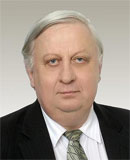Contents: 2024 | 2023 | 2022 | 2021 | 2020 | 2019 | 2018 | 2017 | 2016 | 2015 | 2014 | 2013 | 2012 | 2011 | 2010 | 2009 | 2008 | 2007 | 2006 | 2005 | 2004 | 2003 | 2002 | 2001
2014, 9
About the physical structure of sounds Z and ZH (soft and hard)
language: Russian
received 26.09.2014, published 04.11.2014
Download article (PDF, 224 kb, ZIP), use browser command "Save Target As..."
To read this document you need Adobe Acrobat © Reader software, which is simple to use and available at no cost. Use version 4.0 or higher. You can download software from Adobe site (http://www.adobe.com/).
ABSTRACT
The method of approximation is used for decomposition of the sounds Z and ZH (hard and soft) of human speech on the set of the different frequencies partial waves. It is shown, that some of this waves behave regularly, some of waves randomly flashed and immediately fades, some of waves are modulated by the half of frequency of the first regular mode. There are assumptions that these peculiarities of partial waves behavior is the reason of phenomena of formants. An explanation of the difficulties of speech recognition techniques based on Fourier transforms is given. Several probability-based criterions for distinguishing the above sounds and distinguish people pronouncing the sounds above are suggested.
Keywords: automatic speech recognition, digital signal processing, pattern recognition, human voice.
15 pages, 4 figures
Сitation: V. V. Mitsianok. About the physical structure of sounds Z and ZH (soft and hard). Electronic Journal “Technical Acoustics”, http://www.ejta.org, 2014, 9.
REFERENCES
1. Галунов В.И., Лобанов Б.М., Загоруйко Н.Г. Синтез и распознавание речи (попытка построения онтологии) // Акустика речи: материалы 14-й сессии российского акустического общества. Н.Новгород, 15 – 18 ноября 2004.
2. Лобанов Б.М. О развитии речевых технологий в Беларуси. // Речевые технологии. − 2008. − №1. − c. 49 − 59.
3. Сорокин В.Н. Фундаментальные исследования речи и прикладные задачи речевых технологий. // Речевые технологии. − 2008. − №1 − с. 18 − 48.
4. http://intsys.msu.ru/invest/speech/research. Интеллектуальные системы. Сайт кафедры МТИС и лаборатории теоретической кибернетики механико-математического ф-та МГУ.
5. Бабин Д.Н., Мазуренко И.Л., Холоденко А.Б. О перспективах создания системы автоматического распознавания слитной устной русской речи. // Интеллектуальные системы. − 2004 − Т.8, № 1 − 4. − с. 45 − 70.
6. Лобанов Б.М., Цирульник Л.И. Компьютерный синтез и клонирование речи / − Мн. : Белорусская наука, 2008. − 342 c.
7. Гецевич Ю.С., Лобанов Б.М. Система синтеза белорусской речи по тексту. // Речевые технологии. − 2010. − №1. − c. 91 − 100.
8. Митянок В.В., Коновалова Н.В. Применение фазового анализа звуков речи для распознавания человека по его голосу. [Электронный ресурс] //Техническая акустика. – Электрон. журн. − 2013. − №4. − Режим доступа: http://www.ejta.org, свободный.
9. Митянок В.В. О числовых характеристиках некоторых низкочастотных звуков человеческой речи [Электронный ресурс] // Техническая акустика. – Электрон. журн. − 2008. − №15. − Режим доступа: http://www.ejta.org, свободный.
10. Митянок В.В. Определение числовых характеристик высокочастотных звуков речи на основе аппроксимации гармоническими функциями. // Известия НАН Беларуси, сер. ф.-м.н. − 2009. − №2 − c. 111 − 118.
 |
Viachaslau V. Mitsianok , born 1951., Ph.D., associate professor at Mathematics & Computer Science department of Polessian St. Univ., Belorussia. Dissertation (1975) was devoted to the problems of the motion of bodies in General Relativity. Scientific interests is in theoretical physics, theory of Variable stars, mathematical processing of signals, image recognition. e-mail: mitsianok(at)mail.ru |
